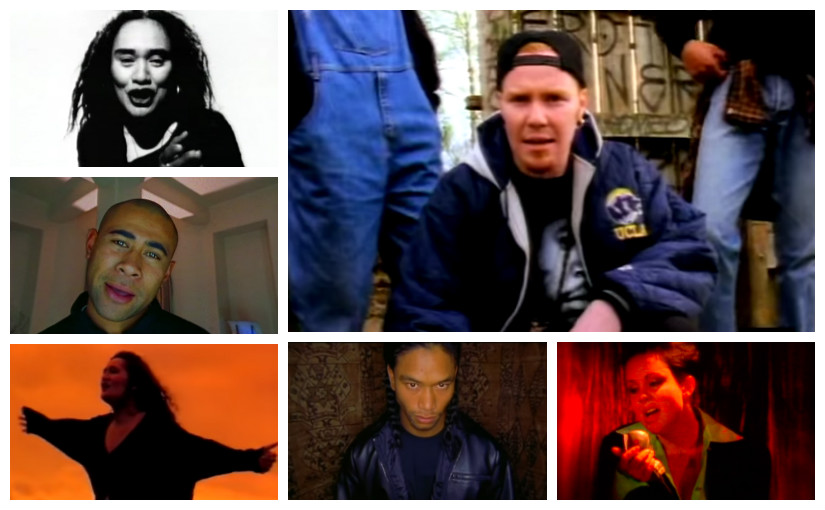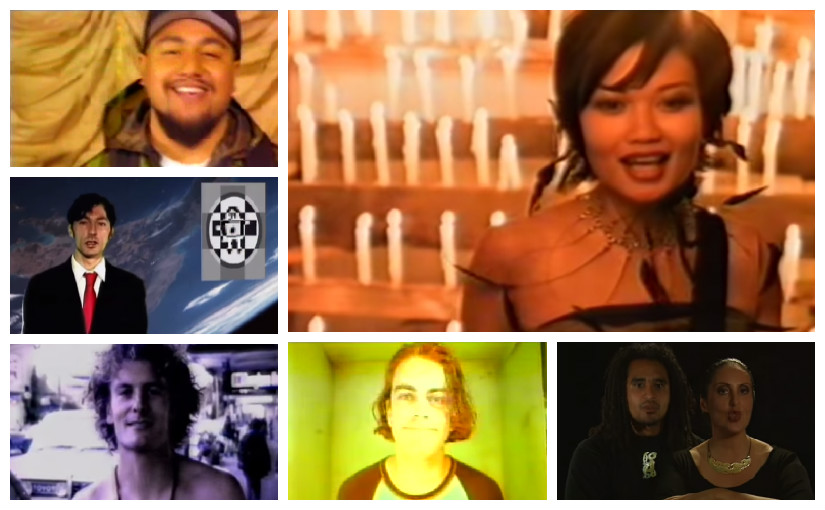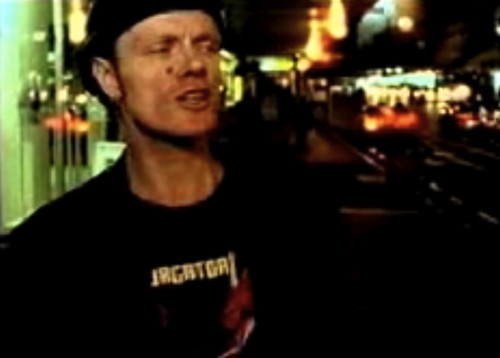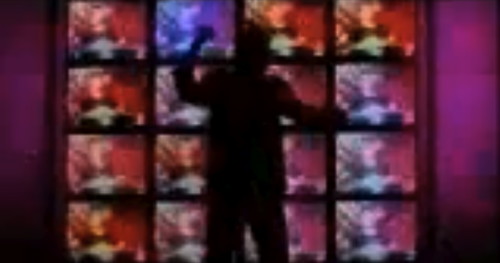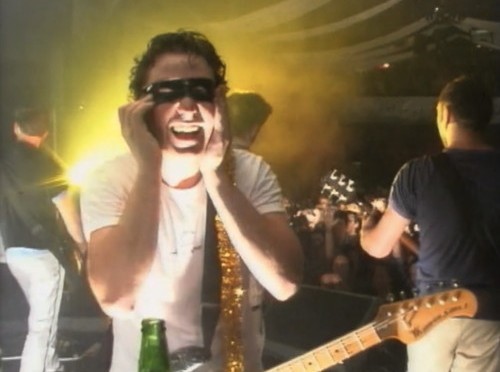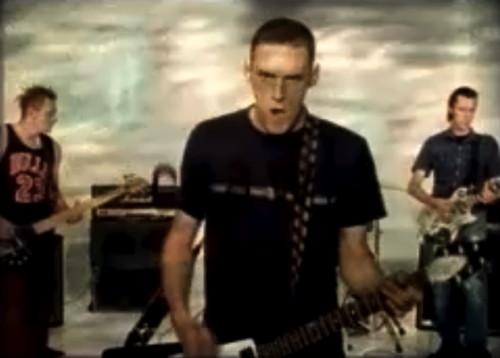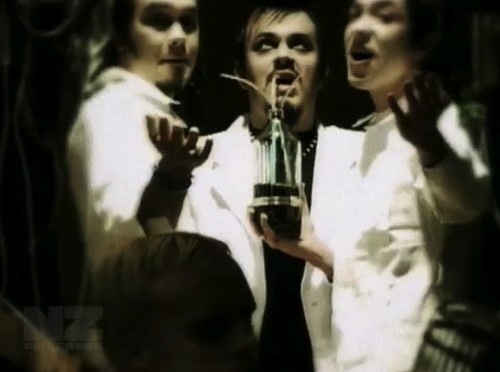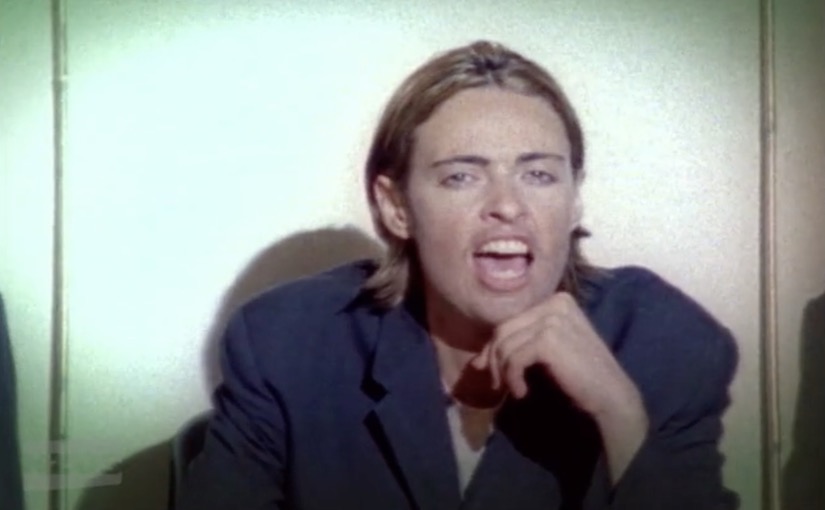Windswept beachiness, urban Balkan, Christchurch in the before time, racial unity, straight down, a ’90s fashion parade, tattoos, Auckland cool, velvet painting, getting seductive, and a bad lip sync.
Continue reading Found videos from the 1990s
Category: 1998
Found videos from 1998
A high street strip, a gothic seductress, a cultural lesson, a bomb threat, a photo booth, a photo shoot, a cruise down the main street, a broadcast from outer space, a floaty necklace, a Harajuku girl and a mysterious staircase.
Continue reading Found videos from 1998
Trip to the Moon “I Can Change”
 The first track from the Tom Ludvigson and Trevor Reekie collaboration, with Bobbylon of the Hallelujah Picassos on vocals. The video starts with Bobbylon meandering along K Road at night. It’s a different K Road, where the Pascoes building had a Pascoes jewellery store in it, not a tattoo parlour.
The first track from the Tom Ludvigson and Trevor Reekie collaboration, with Bobbylon of the Hallelujah Picassos on vocals. The video starts with Bobbylon meandering along K Road at night. It’s a different K Road, where the Pascoes building had a Pascoes jewellery store in it, not a tattoo parlour.
Bobbylon comes across as a man who’s lead a troublesome life, just as the lyrics reckon. He turns off the street and heads into a building. We next see him performing the song with the rest of the group (including Peter Scott, father of Home Brew’s Tom Scott, on bass) in a dark studio.
The video spends a whole in this black space, as if Bobbylon is having to go through a period of decompression, adjusting to his new plans. By the time the second chorus comes along, we get flashes of Bobbylon singing in a different location. This time he’s outside, shirt off, basking in the morning sun, before he finally returns to K Road, this time in the morning. Things feel different.
Sometimes when Karangahape Road is used in a music video, it’s a lazily chosen cool, urban location. But in this video, it’s used sparingly and thoughtfully. The contrast of the gritty K Road at night with the daytime version is a perfect match for the theme of the song.
Best bit: the old ’90s-era phone box, back when a) people used phone boxes and b) people used phone cards.
Director: Peter McLennan
Next… space 1999.
Weta “Where Have You Been”
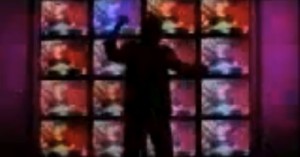 Weta! It’s nice to see them. Sadly only 56 seconds of this video is available online and it’s a pretty lowres version, but good on Pandanya for uploading it to YouTube.
Weta! It’s nice to see them. Sadly only 56 seconds of this video is available online and it’s a pretty lowres version, but good on Pandanya for uploading it to YouTube.
I haven’t seen the video before and the excerpt starts right in the middle, so I’m left trying to make sense of what’s happened previously. There are shirtless, muscly men with pink hoods on their head, young women gleefully tossing their hair about, a bank of TVs and the pink-hooded heavies terrorising the band.
Weta were a great band with some great songs. It seemed like they were going to take over the world, but for whatever reason, things just didn’t work out (famously inspiring Shihad to write “Pacifier” about Aaron) and by 2001 Weta had broken up.
This video offers a glimpse into the early days of Weta, making a crazy music video that manages to capture their energy (at least 56 seconds worth of it). But the best thing about the video excerpt is that includes Aaron Tokona’s fierce guitar solo. It’s thick with sonic energy, and a fine reminder of Weta at their peak.
Best bit: the hair tossing, the likes of which have not been seen since Ngaire’s “So Divine” video.
http://youtu.be/Aeeidnrl7L0
Director: Adam Larkin
Film Festival
Next… the pretty people.
The Feelers “Pull the Strings”
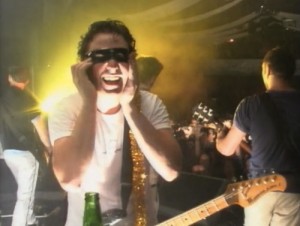 What happens when a band is too busy touring to make a new music video? They make a music video cobbled together from footage of life on the road. But somehow the Feelers’ version of this ends up being kind of crazy.
What happens when a band is too busy touring to make a new music video? They make a music video cobbled together from footage of life on the road. But somehow the Feelers’ version of this ends up being kind of crazy.
The video starts with The Feelers having a Backstreet Boys moment, disembarking a small aeroplane. Only it’s not a Learjet. It’s an Air New Zealand Link. There’s a lot of footage of the band on stage, but it’s the off-stage antics that are more fun.
The boys sit in a DeLorean, squirt each other with water guns, hoon around rural Canterbury, through the Mt Victoria tunnel and they sign autographs. Autographs! Remember when the Feelers were teen idols? When young women would thrust their t-shirt-clad bosoms at the Feelers and demand a signature?
We’re also treated to the sight of a young man with a theatrical circular saw slicing into a Feelers’ guitar. And then we see a newspaper article about the incident (which includees the phrase “capital hard rockers Shihad), proof that the incident wasn’t just extreme but it was also notorious.
The most revealing vignette is where James Feelers puts on a superhero eyemask. He wears it for few moments, smiles, then shakes his head and takes it off. Because wearing a superhero mask is silly.
But despite all the shenanigans, at the heart of the video is the Feelers playing to a stadium of people who love them. There’s real joy and excitement on the faces of the fans, and that’s something worth capturing in a music video.
Best bit: the grid of cops.
Director: Duncan Cole
Ngā Taonga Sound & Vision
Next… hair, heavies and huh?!
Slim “Bullet in my Hand”
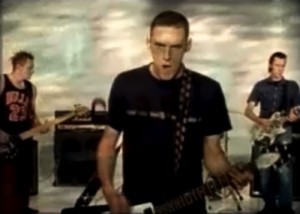 Shihad’s labelmates Slim came from the remains of Pumpkinhead. “Bullet in my Hand” is a satisfactory short and punky tune that looks to have been directed by guitarist/singer Aaron Hogg.
Shihad’s labelmates Slim came from the remains of Pumpkinhead. “Bullet in my Hand” is a satisfactory short and punky tune that looks to have been directed by guitarist/singer Aaron Hogg.
It’s obviously a low-budget job. Most of the video is static shots of the band playing in a bare studio, almost as if they set up the camera on a tripod, hit record and went for it. The shots aren’t always framed with much artistry. A lot of the video involves the lead singer’s head right up close to the camera. That’s fine, but some contrast would be good.
The unremarkable studio footage is spiced up a little with digital graphic flashing in quick succession. It’s a reminder that effects like this were becoming cheaper and more accessible.
And things get even more exciting when the lights go out, Aaron loses his shirt and the video becomes a rapid kaleidoscope of darkness, colour, skin and scowls. These bits are more effective than the main studio shots, but for a DIY effort without a major label behind them, it’s not a bad effort.
Best bit: the power leap, an injection of rock showmanship.
Director: Marc Swadel
Ngā Taonga Sound & Vision
Next… feelin’ it on the road.
Shihad “My Mind’s Sedate”
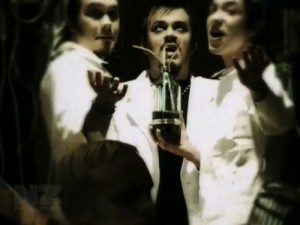 At the time this song was released, I felt very energised by the sarcastic opening line: “Well, I trust the police and the government!” Whereas now it seems like boilerplate angry young man. But I like what Shihad have done with the video. Directed by Reuben Sutherland, it’s taking a fairly standard video treatment – the mad scientist – and giving it a really dark, icky edge. This is not a musical performance video, but Shihad have never been afraid to take themselves out of traditional rock settings.
At the time this song was released, I felt very energised by the sarcastic opening line: “Well, I trust the police and the government!” Whereas now it seems like boilerplate angry young man. But I like what Shihad have done with the video. Directed by Reuben Sutherland, it’s taking a fairly standard video treatment – the mad scientist – and giving it a really dark, icky edge. This is not a musical performance video, but Shihad have never been afraid to take themselves out of traditional rock settings.
Jon spends most of the video wearing a lab coat, curled up in the corner of a lab, with the rest of the band lurking in the background, like three other scientists who are watching their colleague descend into madness.
Dr Jon’s hair is wet with sweat. It’s a filthy lab and strange things slither in the corners. The line “you don’t have a brain” is complemented with an selection of brains, arranged like chess pieces on the lino tiles.
The video keeps looking like an ordinary mad scientist sci-fi, but suddenly really weird things, ugly things will pop up, making Jon’s character seems like a run-of-the-mill mad scientist in the midst of severe meth psychosis. Poor chap. He probably just wanted to create a bride.
Director Reuben Sutherland won Best Video at the 2000 New Zealand Music Awards. It was his second consecutive win, and the third win in a row for a Shihad video.
Best bit: the weird insecty thing on the shelf.
Director: Reuben Sutherland
Ngā Taonga Sound & Vision
Next… bullet boys.
Peter Stuyvesant Hitlist “Ode to K Road”
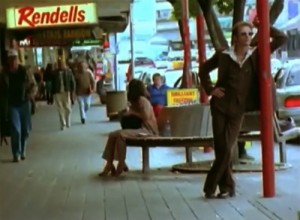 The Peter Stuyvesant Hitlist were known for their comedy loungey live styles, but they tone it right down for their second single, “Ode To K Road”. The video, made by Andrew Moore, Steve Sinkovich and Stuart Page, consists of sped-up footage of K Road, mostly with members of the band just standing around.
The Peter Stuyvesant Hitlist were known for their comedy loungey live styles, but they tone it right down for their second single, “Ode To K Road”. The video, made by Andrew Moore, Steve Sinkovich and Stuart Page, consists of sped-up footage of K Road, mostly with members of the band just standing around.
I lived on K Road around this time, so the video is a nice bit of nostalgia. When Karangahape Road appears in music videos, it’s normally at night, but “Ode to K Road” also happens at day time, with the very ordinary sunlit goings-on of the street.
It’s a reminder of K Road of the late ’90s, before Starbucks came, Rendalls closed and the adult shops disappeared. Back when it was all a bit shabby and the street was full of more weird shops than cool shops. (My favourite weird shop was the plastics shop that never every depreciated their prices, so there was a crappy old spice rack full of a long discontinued spice brand still selling for $39.95. As if.) Back when K Road has multiple second-hand record shops that wanted to eat all my money.
The song has a bittersweet tone and that feeling seeps through to the footage. It’s a reminder that K Road never really feels like it’s radically changed until the past is compared with the present. While there are plenty of familiar businesses (Rasoi, Leo O’Malley and, er, Dick Smith), the video is packed full of the ghosts of K Road past.
Best bit: the glistening metal facade of Al’s Diner.
Director: Andrew Moore
Ngā Taonga Sound & Vision
Next… a scientific experiment gone wrong.
King Kapisi “Reverse Resistance”
 The video opens with the ruins of an old church. One wall has what were once a series of three crosses moulded in the concrete, but the right-handed cross has broken away to a giant hole. “I’m an atheist,” King Kapisi asserts. “Glad to meet ya!” Well, nice to meet you too.
The video opens with the ruins of an old church. One wall has what were once a series of three crosses moulded in the concrete, but the right-handed cross has broken away to a giant hole. “I’m an atheist,” King Kapisi asserts. “Glad to meet ya!” Well, nice to meet you too.
The video is shot in Samoa and manages to make the place look like a tropical paradise with a slightly uneasy undertone. Mr Cabbage spends a lot of time with no shirt on, but rather than just being the standard music video “aw yeah, check me out”, there’s also a practical side. Most other men and boys in the video are just wearing lavalava, so it’s not especially out of the ordinary.
The tone of the video makes the ordinary scenes of island life seem kind of sinister. The ordinary scenes of little boys playing, men fishing and people harvesting bananas somehow seem a little edgy. (This in turn has given me the idea for cosy murder mystery set in Samoa.)
But the video also has a travelogue quality, with perfect scenes of island life. Hey, there’s King Kapisi walking past with a surf board emblazoned with the Samoan flag. This in turn is a reminder of what’s missing – urban life. The song is straight outta Auckland but the video has taken it from its predictable city context and moved it to a highly religious South Pacific island nation.
And it works. The contrast between the music and the setting help underscore the message of the song. And it lets an artist use a tropical island location without it ever feeling like a Duran Duran video.
Best bit: the older women combing her long white hair.
Director: Sima Urale
Ngā Taonga Sound & Vision
Next… inner city love.
Jan Hellriegel “Melusine”
“Melusine” is a lush ’60s-influenced pop song about merman love. (The Melusine is a freshwater mermaid, also the star of the Starbucks logo). The video goes in a slightly different direction, exploring Jan’s relationship with gender identity (and that makes it seem pretty serious, but it’s really quite fun).
The video starts with a waiting room filling up with handsome fellows but we soon realise that the guy in the middle is Jan in drag. She makes a pretty decent bloke, but as soon as she starts singing, we’re instantly reminded that she’s a lady.
Man Jan enters a room labelled “nga wahine anake” (women only) and begins to strip off, revealing the female form. There’s a lot of nudity in this part, but it’s shot very tastefully and cleverly. It’s not done to titillate, and director Tracey Tawhiao hasn’t needed to use any comedy prop placements to hide rude bits.
From the naked state, Jan transforms into a glamourpuss, with bold make-up and a fabulous gold lurex gown. It actually reminds me of the videos Madonna makes that mess around with gender – the feminine is a bit masculine, the masculine is a bit feminine.
NB: Jan Hellriegel has written a really good piece called the Emancipation of Melusine, where she writes about the making of the song and the ideas behind the video.
Best bit: the te reo sign, a welcome piece of New Zealand.
Director: Tracey Tawhiao
Ngā Taonga Sound & Vision
Next… a tropical break.
